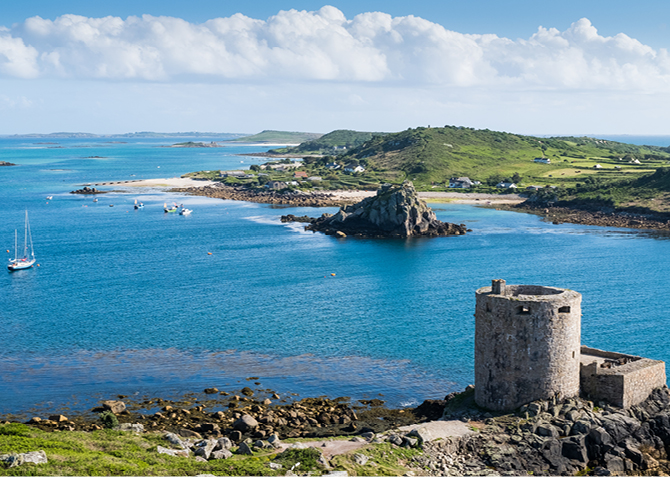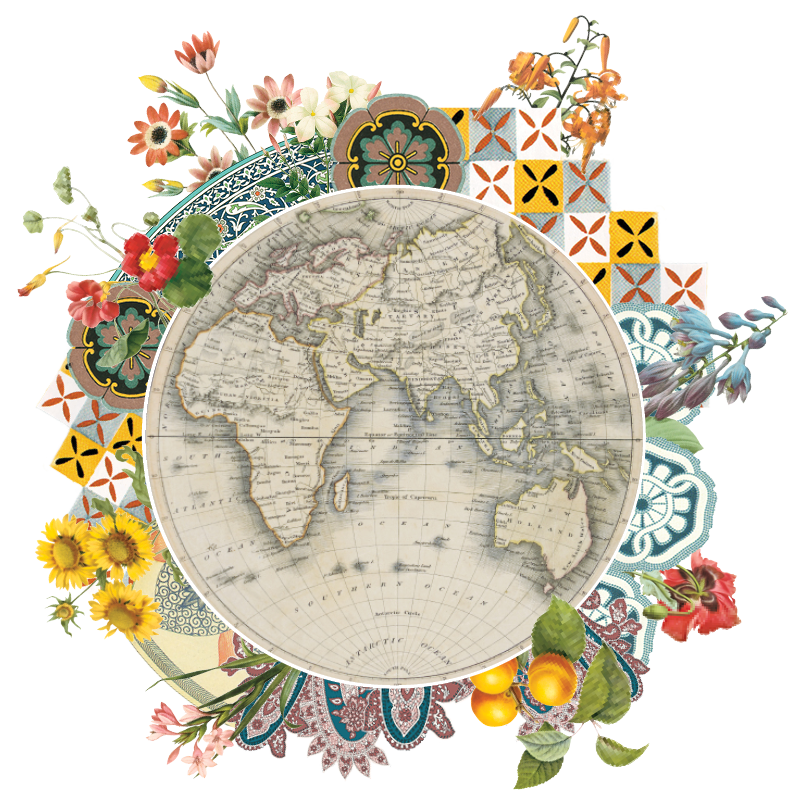Neville Wakefield
Writer, producer and curator Neville Wakefield speaks with Sebastien Theroux about sailing Björk’s boat across the Atlantic, his recent ramble through Cuba, and transforming the Californian desert into an exhibition space.
- Category:
- Interviews
- Words By:
- Sebastien Theroux
- Photography:
- Desert X
- Published:
- October 10, 2018
Although his professional life can sometimes be cloaked in mystery, one thing is clear about the life of art curator Neville Wakefield: he gets around. Whether bombing through Death Valley on his Ducati Hypermotard or sailing a converted trawler across the Atlantic with his friend Matthew Barney, Neville’s curiosity knows no bounds. But high-octane adventure isn’t what he’s after. People are. And what they can teach him about art and culture.

Neville has overseen shows for a litany of prestigious institutions–from the Frieze Art Fair in London to MoMA PS1 in New York. He’s produced films with the likes of Larry Clark, co-founded Tar Magazine, and curated the famed art exhibitions ELEVATION 1049 and Desert X, the site-specific show that transformed the Coachella Valley into an exhibition space. He also has an encyclopedic knowledge of the art world. Most recently, he curated Cartier’s launch of the new Santos de Cartier watch. Neville is no stranger to the weird worlds of celebrity and corporate cocktail parties; the clash and communion of art and commerce have been an enduring fascination.
He hails from the Isles of Scilly, a cluster of tiny specks off England’s Cornish coast. His father turned down a position running the antiquities department at The Met to join his mother, a painter, on those isolated shores. “They were proto-hippies,” Neville explains, “They caught the tail end of the war and that colored their worldview.” Neville’s attention whirrs between ideas like a weathervane in a hurricane; one moment regaling me with stories of sailing Björk’s boat across the Atlantic, the next explaining his love of São Paulo.
We met in his apartment on Bond Street in Lower Manhattan to talk art, travel and his intention to spend the next week “enjoying the relative quiet of New York City in late summer.” He’s relaxed and gracious. “This street has become a strange version of itself,” he laments, peering down at the cobblestones. “The paparazzi lurk about, stalking the Hadids next door.” He hulks around the apartment with the gait of a boxer, eventually settling into a plush leather sofa. His voice reverberates through the apartment like a grizzly bear in an empty cave. Despite his accomplishments, Neville stays humble, always quick to downplay his talent in his success. “I’m not very inquisitive,” he jokes, then launches into stories about his research trip to Cuba, where he visited out of sheer curiosity.

Is it true you got to school on a donkey cart as a kid? [Laughs] It was strength through humiliation. They’re such tiny islands: a thousand-odd people altogether. It was very insular and socially constrictive because everyone knows everything on an island of that size. But there were incredible freedoms in other senses. You’re forty miles offshore, sailing everywhere.
Was sailing to the Cornish coast a regular weekend trip? No, not really—the mainland held little appeal. But there was the freedom of the water. All my friends had boats; you could just pick up and sail to France. It was pre-cell phone, pre-GPS, so I learned to navigate celestially.
It’s amazing how irreversibly shaped we are by the place we come from. Totally. One of my most interesting trips was crossing the Atlantic in a boat with Matthew Barney. It took over a month. He and Björk had bought a converted trawler, and I hadn’t yet done a transatlantic crossing. We took the boat from Gibraltar to Barbados, first going down the African coast, stopping in Senegal. I love sailing. It’s very monastic. There’s a beauty to the rhythms you get into.
You recently went to Cuba? Yeah. I just got back. It was incredible. I’d always wanted to go, but just hadn’t realized how easy it was. I went to see some artists and to see Cecilia Bengolea, an Argentinian dancer who was there rehearsing with a Cuban company for a tour across Europe.
Where did you go?
I was mostly in Havana, which is nuts. It’s architecturally amazing because you’ve got Spanish colonial right next to Soviet brutalism, a combination that’s incredibly striking. Also, there’s no advertising. It’s a bit like São Paulo in that respect. No billboards. No neon. So you really feel the architectural texture in a way that you don’t when it becomes part of an empire of signs. There were some great artists there that I had the pleasure of visiting including Wilfredo Prieto and Marco Antonio Castillo Valdes of [art collective] Los Carpinteros.
Is art the main reason you travel? On a general level, I think art is about getting lost in some way. The desert is a place you go to get lost, but paradoxically also to find yourself. So part of the idea of Desert X was to create a journey. People responded to it, I think, because they want to go to the desert, they want to get lost and to experience a condition of openness but paradoxically need a structure within which to find themselves. In effect, what the show gave them was a roadmap, an excuse to go to these places they wouldn’t otherwise have visited.
What sort of souvenirs does a famous art curator bring home? None actually. I’m not particularly acquisitive and aside from books don’t collect.
Why’s that? I’m fairly monastic. I’m just happier with less. Plus, the things we enjoy most often don’t travel well. We’ve all had that experience of traveling somewhere like Greece and bringing back a bottle of ouzo that tasted sublime there, but when you bring it back it tastes like turpentine. You’re like, how the fuck was I having such a good time drinking this there?
Such a testament to experiencing a place firsthand and not just traveling vicariously through social media… Exactly. And a testament to the fact that so much of what really matters fails to register in the image. Not just on a cultural level, but at a sensory and atmospheric level too. We’ve become so accustomed to the language of images. But it’s a very restrictive language. It flattens out experience. So that everything that actually matters to you and I—the sensory aspects of experience like smells, sounds and textures—is lost and you’re just left with a kind of FOMO deposit.
Is it people or places that inspire you to travel? When I travel it’s always the people who are the entrée into the place. That’s one of the best things about being a curator; you gain access to a body of people who are thinking about the less obvious aspects of the culture that they inhabit.
Where was your last vacation? Isles of Scilly.
Where will your next vacation be? Malibu.
The thing you can’t travel without? Ambien.
Plane, train or automobile? Neither. Slow boat or fast motorcycle.
The people you’d most like to sit next to on a long-haul flight? The ones who are asleep.
What is your in-flight ritual? Pretty tedious, but I read and I write. In that order.
The language you wish you spoke? Spanish. I grew up speaking French and German, as that was what was taught in England. Not having Spanish here is horrible.
When were you happiest on the road? Generally I’m happiest when I don’t know where I’m going. I had that quite recently when I went to Death Valley. I was in Palm Springs and just headed out without a clear mission.
Desert island or downtown? Desert.
If you could live at any hotel, which would it be? Probably the Excelsior in Naples. While the hotel itself is nothing special, it’s been host to artists from Joseph Beuys, Warhol, Twombly and Kounellis, all of whom lived there at various times, and you feel the dirty, vibrant energy of the city all around.
What is your room service indulgence? Endless green tea.
The strangest place you’ve spent a night? Under an upturned row boat on one of the uninhabited islands where I grew up.
What is your favorite market? The Hollywood Farmer’s market or Portobello in London.
If you could travel to any place in any epoch, which would it be? Sicily in Homeric times. I grew up with the classics, the Odyssey, and all that Homeric mythology. Plus, growing up on islands I was acutely aware of those journeys and nautical adventures.
What are the show-off spots in your hometown? The Mermaid Inn? [Laughs] It’s really devoid of any show-off spots whatsoever.
Which places would you happily spend a weekend, a week, a month and a year?
Weekend: Upstate New York, I have a place there near Woodstock. A plywood box I built myself.
Week: New York City. A week is enough here.
Month: Malibu.
Year: São Paulo. I love the city architecturally. I love Brazil. Everything happens there.
Your biggest extravagance on the road? Long-distance calls.
Describe a memorable meal from your travels. Cuba was full of great flavors. People grow their own food because there’s so little imported. So it’s local, completely fresh and delicious. Rice and beans are the staple, but it was the middle of papaya and mango season. I had this ceviche with papaya that was simple but unbelievably good.
Travel hell is? Airports.
Where are you ashamed that you’ve never been? Mexico City.
Three favorite stores on earth? Dashwood Books across the road from where I live in New York. Arcana Books in Los Angeles and Stable Energies in New Jersey.
Most treasured travel memento? I don’t think mementos are the most important thing.
Why do you travel? To get away from here. [Laughs]
